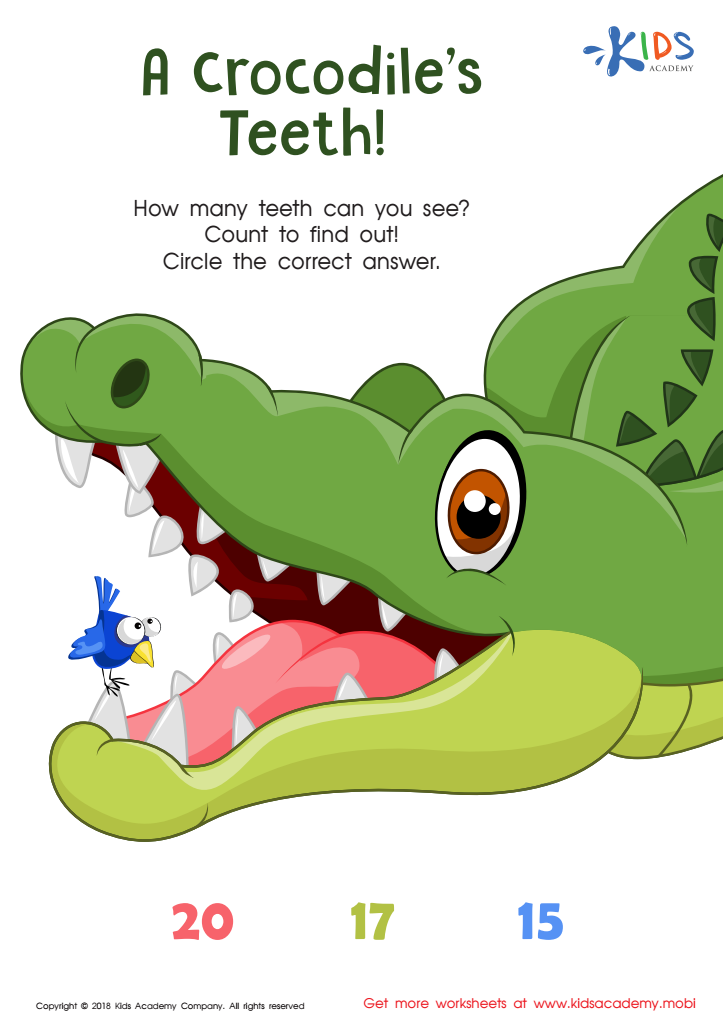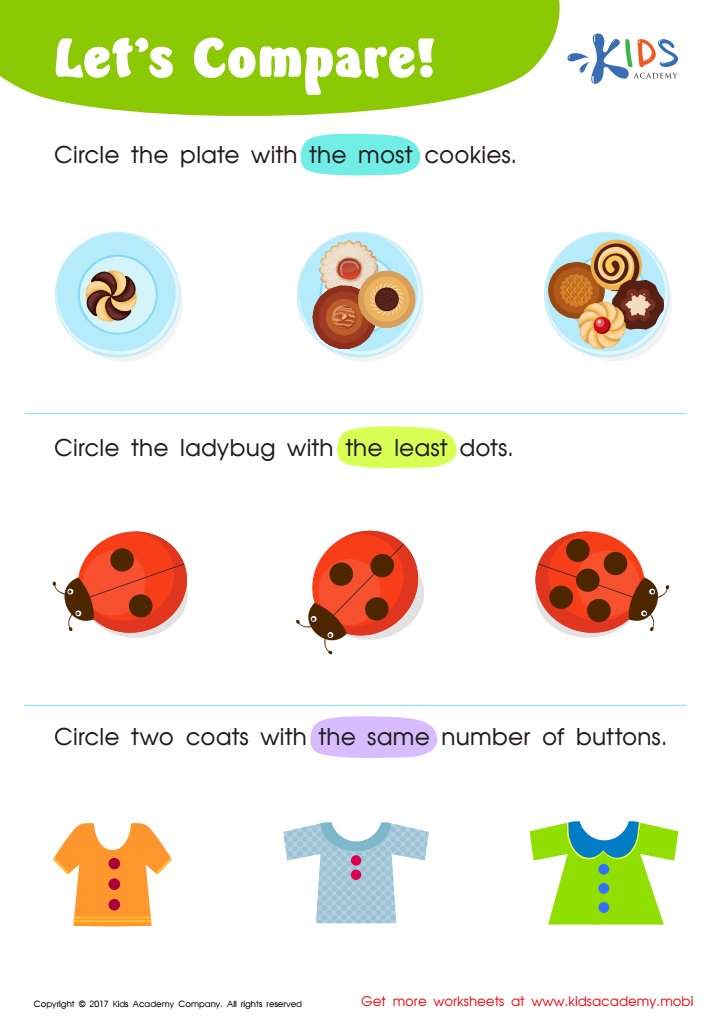Understanding comparisons Normal Worksheets for Ages 5-7
4 filtered results
-
From - To
Unlock the world of comparisons with our engaging “Understanding Comparisons Normal Worksheets” designed specifically for children ages 5-7. These fun and interactive worksheets help young learners grasp essential math concepts, including size, quantity, and more—crucial skills for their academic growth. Featuring colorful illustrations and relatable scenarios, our worksheets make learning enjoyable and help students foster critical thinking abilities. Perfect for both classroom settings and at-home practice, these resources provide great opportunities for children to develop their understanding of comparisons in a variety of contexts. Empower your child’s learning journey and watch them thrive with our tailored worksheets!


Animal Features Worksheet


Comparing with a Third Object Worksheet


A Crocodile's Teeth Worksheet


Matching: Classifying Toys by Size Worksheet
Understanding comparisons is crucial for children aged 5-7 as it lays the foundation for critical thinking and problem-solving skills. At this age, children begin to explore concepts like more and less, bigger and smaller, and heavier and lighter. Grasping these comparisons not only enhances their mathematical abilities but also contributes to their everyday decision-making processes.
For parents and teachers, fostering comparison skills helps children develop reasoning and analytical thinking. When children learn to compare objects, quantities, or situations, they build a conceptual understanding that can be applied across various subjects, from math to science and even in personal relationships.
Moreover, comparisons assist in language development, allowing children to articulate their ideas more clearly. They learn to express preferences and make judgments, skills that are vital for effective communication.
Engaging children in activities that encourage comparisons—like sorting toys by size or discussing different types of weather—makes learning interactive and fun. Ultimately, supporting young children in understanding comparisons not only enriches their educational experience but also equips them with essential life skills that will serve them well into the future. Thus, parents and teachers play a vital role in nurturing these foundational capabilities.
 Assign to My Students
Assign to My Students















